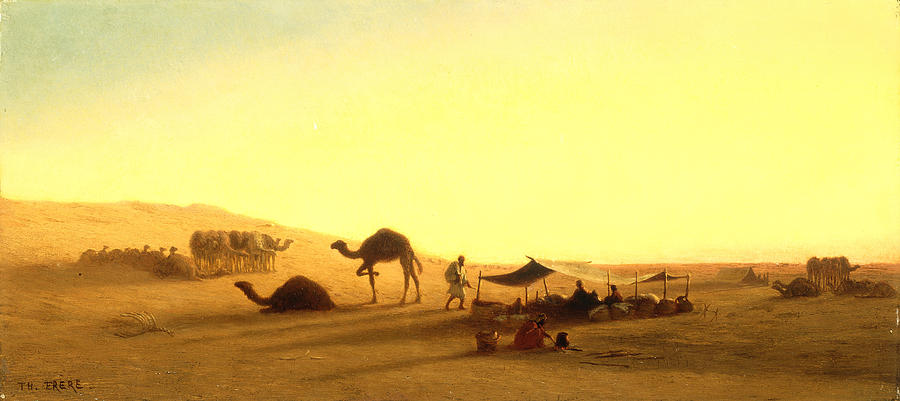Autumn Sestina
Clouds obscure the autumn
skies.
The dry leaves drift
across the lawn.
Where the breeze pushes
them they drift
In shifting mounds like
desert dunes
Dancing. I crunch
them under foot,
Powdering the corpses of
summer.
I grieve the passing away
of summer
With its blue unclouded
skies.
I scuffle the powder with
my foot,
Drawing arcane sigils on
the lawn.
I wish I rode the restless
dunes
Like a Berber. If I
could drift
Unfettered as the leaves
can drift
Perhaps I’d forget the
suns of summer
And the lure dangled by
the drifting dunes
Under the desert’s
rainless skies.
The green grass yellows in
the lawn;
Dry weeds tangle round my
foot.
I stoop to unwind their
stems from my foot.
I watch the fog patterns
drift
Above the dying autumn
lawn.
I shed an inner tear for
summer
With brassy suns in azure
skies.
Above the hot air dancing
on the dunes.
I’m no Arab sheik. My dunes
Crumble under my heavy
foot
And no sun burns in azure
skies
Where autumn leaves shift
and drift
Away from trees that
shaded summer
And kept the green fresh
in the lawn.
The autumn leaves upon my
lawn
Shift and shape new piles
of dunes
Untouched by dying summer.
I shake leaf-powder from
my foot
And give it to the wind to
drift
Under the grey autumn
skies
Above my lawn. I
dream my foot
Walks the dunes under
clouds that drift
Where summer blue fades from the skies

An Arab Encampment -- Charles Theodore Frere
A sestina is a fixed verse form consisting of six stanzas of six lines each, normally followed by a three-line envoi, a "half-stanza" that consists of three lines which include all six of the line-endings words of the preceding stanzas. The words that end each line of the first stanza are used as line endings in each of the following stanzas, rotated in various set patterns. The oldest-known sestina is "Lo ferm voler qu'el cor m'intra," written ca. 1200 by troubadour Arnaut Daniel, who called it a "cledisat," meaning, more or less, "interlock" in Old Occitan. Dante Durante degli Alighieri began writing sestinas in Italian in the 13th century and Francesco Petrarca in the 14th, establishing it as an "Italian" verse form. Pontus de Tyard was the first poet to attempt the form in French, in the 16th century, and the only one to do so prior to the 19th century; Spenser introduced the form in English in 1579, with three sestinas (lines 151–89 of the August Æglogue in Edmund 's "Shepherd's Calendar"), and Philip Sidney wrote a double sestina close to the end of Book I of "The Countess of Pembroke's Arcadia" in 1590; Sidney's "Farewell, O sun, Arcadia's clearest light" from a later edition of the "Arcadia" was the first rhyming sestina in English. Then William Drummond of Hawthornden published two "sextains" in 1616. Then the form became extinct in English until 1878, when Algernon Charles Swinburne revived it.
ReplyDeleteThe "Berbers" call themselves Imaziɣen (possibly meaning "free people" or "noble men," but perhaps also derived from their ancestor Mezeg [Sheba's son Dedan in the Jewish targumim, the spoken paraphrases, explanations, and expansions of the Tanakh, the Jewish Bible]), but they are commonly known by the word derived from the Greek "barbaros" (barbaric, meaning "non-Greek-speaking); most Imaziɣen live in Libya, Algeria, and Morocco. The Romans called Numidia and the rest of North Africa "barbaria" (land of barbarians), though the Romans and Greeks both referred to the local inhabitants as Mazices, proably the same name as the earlier Meshwesh tribe. During the 8th-century Arab conquest they were referred to as the Mauri, which became the Moros to the 11th-century Spaniards. The term "Berbers" was introduced in English in the 19th century as a replacement for "Barbary."
"Sheikh" is an honorific title in Arabic that commonly designates the hereditary ruler of a tribe and is bestowed to a royal male at birth. The title is sometimes employed to designate a learned person. The Druze call heir religious men by that title, and Arab Christians use it for elder men of stature. In Sufism it designates a wali ("saint"), especially one who initiates a particular tariqa (order).